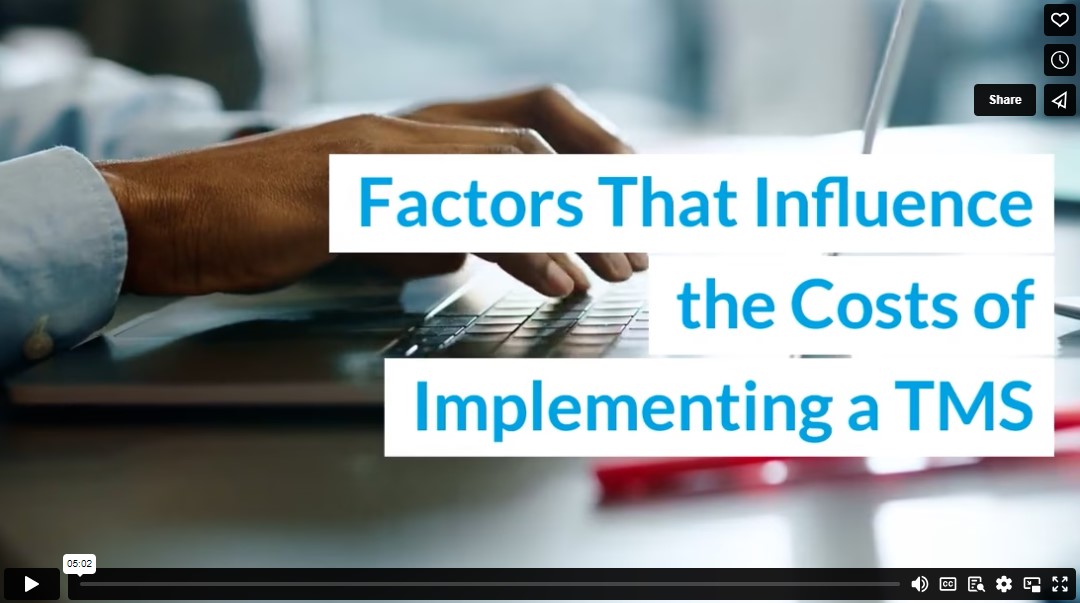Choosing a trucking management system (TMS) involves several key considerations. Beyond assessing functionality and compatibility, you need to consider the cost of implementation.
Several factors can impact this cost, from the scale of the system to the level of customization required. Below, we explore these variables in detail and discuss how they can affect the total investment.
Cloud-Based vs. On-Premise System
The decision between an on-premise and a cloud trucking software has a big effect on implementation costs.
Cloud-based systems usually cost less upfront. Some key TMS platforms don’t charge any up-front costs at all. You pay monthly or per month of the service you use only, which scales with your use. This option cuts down on the need for your own IT hardware and maintenance.
On the other hand, on-premise systems need a bigger initial investment. You buy the software and hardware straight out. This means higher start-up costs, and you’ll also handle ongoing upkeep and upgrades. It suits businesses wanting more control over their systems and data, but it’s a heavier financial lift.
Customization
Customizing your TMS to fit your specific business needs is another big factor in how much it costs.
Standard TMS solutions are good for basic functions, but if you need the system to match your unique business processes, workflows, or industry needs, it’s going to cost more. Customization means more development time and extra resources.
So, it’s crucial to balance what custom features you really need with your budget. Figure out which customizations are essential for your day-to-day operations and which ones you can skip. This way, you avoid spending on things you don’t really need.
User Count
The number of users you add to your TMS can significantly impact its cost. Typically, TMS providers offer pricing plans based on user tiers.
For smaller teams, a plan with fewer user slots might suffice, often at a lower cost. As your team grows, or if you need more staff to access the system, you might need to shift to a higher-tier plan, which increases the expense.
This scaling factor is crucial to consider, especially for growing businesses or those with fluctuating staffing needs.
Integrations
Integrations in a TMS enhance its functionality by connecting it with other essential business systems. For example, a TMS can integrate with supply chain management software or customer relationship management (CRM) systems. These connections streamline various business processes, making them more efficient.
Standard TMS packages often include some basic integrations without additional cost. These cover fundamental needs and ensure the system works well with common business tools. However, for more specialized or advanced integrations, there is usually an extra fee.
So the overall price of a TMS is influenced by the level of integration required. Businesses with complex TMS integration needs that require numerous sophisticated integrations will face higher costs than those that don’t.
Training and support
Training and support play a crucial role in the cost of implementing a TMS. Comprehensive training ensures your team uses the system effectively. However, the more complex the system, the more costly the training can be. This step is essential for leveraging the full capabilities of the TMS.
Many TMS providers include a basic level of training in their initial package, which covers fundamental features. But when your team requires advanced training sessions to handle more sophisticated aspects of the TMS, this usually comes with additional fees.
Ongoing support and customer service are also vital, especially for resolving issues that might arise after implementation. The cost of this support varies depending on the extent of assistance needed. Basic troubleshooting might be included, but extensive or continuous support often incurs extra costs.
Implementation Timeframe
The time it takes to implement a TMS varies and can influence the overall cost. Cloud-based solutions are often faster to deploy and can often be ready to go in a matter of weeks. However, on-premise installations or migrations from older systems can take much longer, potentially 9 to 12 months.
The overall duration is heavily influenced by the size and complexity of your network and the specifics of your deployment plan. A larger, more complex network means a longer setup time.
Number of consultants
The number of consultants needed to implement a TMS system can also affect the cost. Typically, the TMS company may provide a team of three main consultants. This team usually includes a project leader, a developer, and an architect. They’re on the job full-time, making sure everything goes smoothly.
Sometimes, especially for more complex parts like integrating different systems, you might need an extra specialist. This person usually works part-time, putting in a few hours over a couple of weeks.
Your own team will also be involved. Generally, about three of your staff will work closely on the project, and they’ll be backed up by several other part-time experts from your side. All these hours add up, so the more people involved, the higher the cost.
Conclusion
Now that you’re aware of the key factors influencing TMS implementation costs, it’s important to reflect on how these apply to your business.
Ask yourself: Which features are essential for my operations? How many users will need access? Do I need advanced integrations or customization? Considering these questions will guide you toward a TMS solution that balances cost with functionality.
Video




